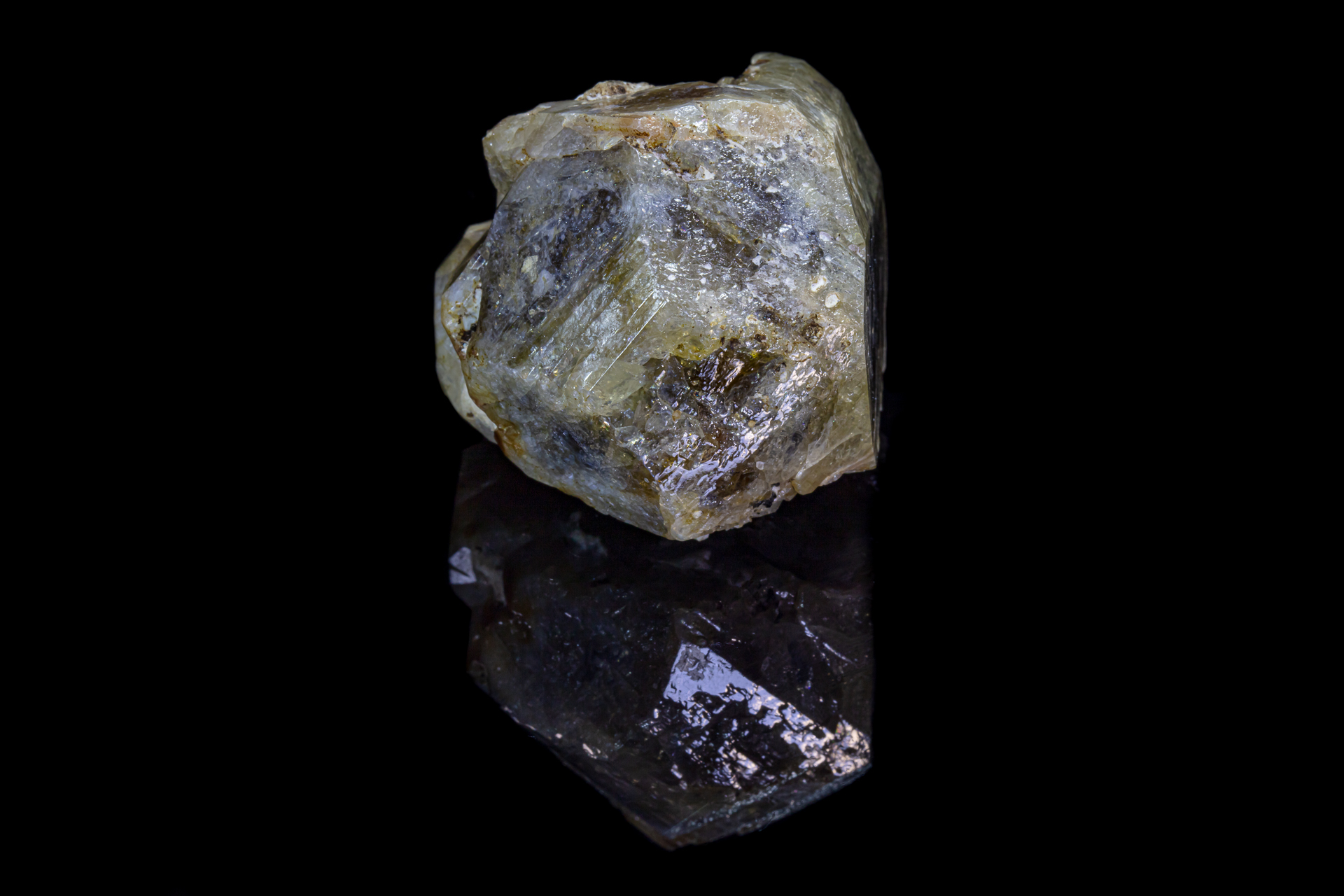Zircon
Formula: Zr(SiO4) May contain minor U, Th, Pb, Hf, Y/REE, P, and others.
Species: Silicates – (Nesosilicates)
Colour: Colourless, yellow, grey, reddish-brown, green, brown, black
Lustre: Adamantine, Vitreous, Greasy
Hardness: 7½
Specific Gravity: 4.6 – 4.7
Crystal System: Tetragonal
Member of: Zircon Group
Name: Renamed in 1783 by Abraham Gottlob Werner from the Arabic (and, in turn, from the Persian “azargun”) “zar”, gold, plus “gun”, coloured, referring to one of the many colours that the mineral may display. Originally named λυγκύριον “lyncurion” in ~300 BCE by Theophrastus. A mineral that may have been today’s zircon was called chrysolithos by Pliny in 37. Called jacinth by Georgius Agricola in 1555.
Dimorph of: Reidite
Isostructural with: Chernovite-(Y), Hafnon, Thorite, Wakefieldite-(Y), Xenotime-(Y)
The zirconium analogue of Thorite and Hafnon. Zircon-Hafnon Series. The low-pressure dimorph of Reidite.
Zircon, zirconium orthosilicate, is found in most igneous rocks and some metamorphic rocks as small crystals or grains, mostly widely distributed and rarely more than 1% of the total mass of the rock. It is also found as alluvial grains in some sedimentary rocks due to its high hardness. Zircon has a high refraction index and, when the crystals are large enough, is often used as a gemstone. In geology, zircon is used for radiometric dating of zircon-bearing rocks (using isotopes of U which is often present as an impurity element, as is Th, radiogenic Pb, Hf, Y, P, and others).

